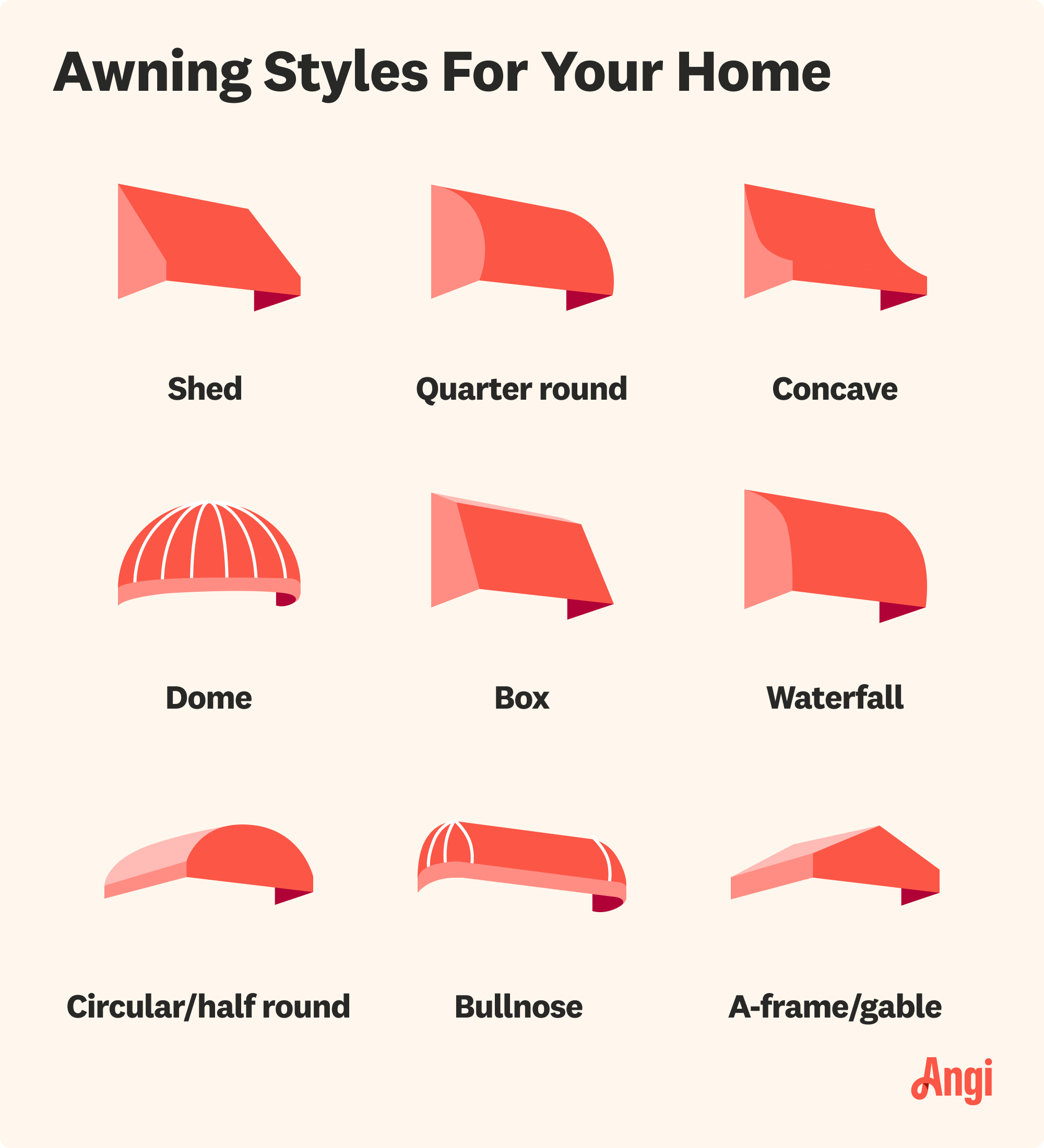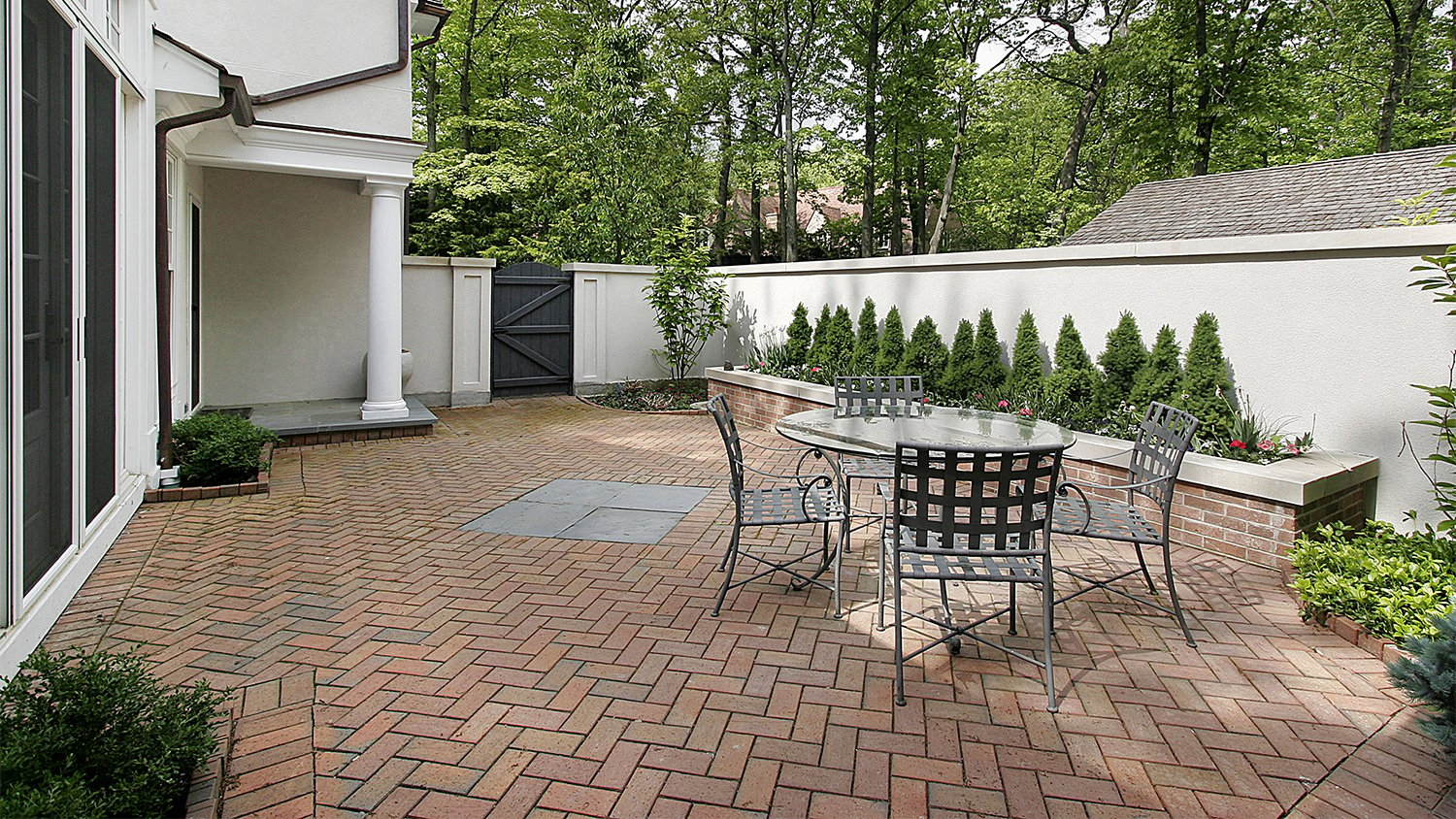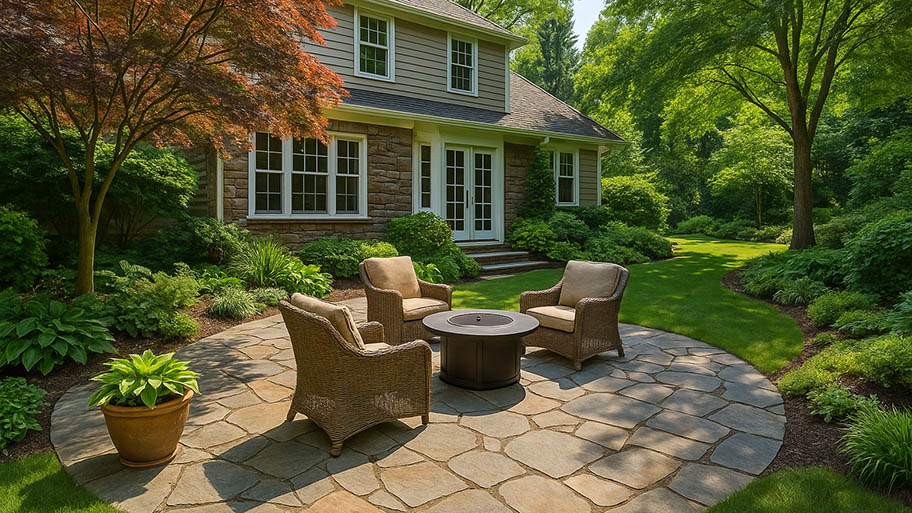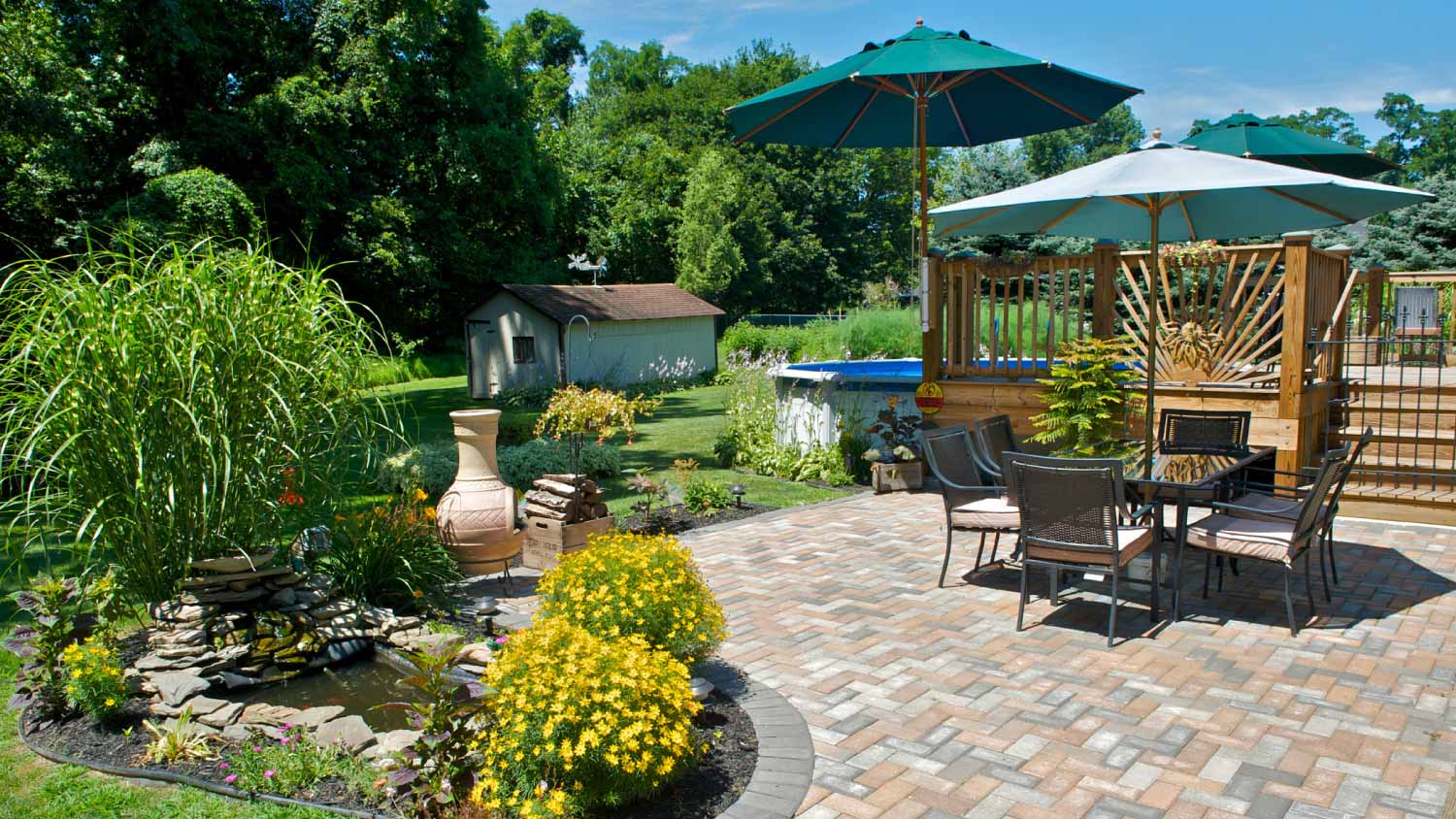
Learn the cost of a metal awning for your home. Discover the essentials of installation, materials, and labor, and explore ways to save on your project.
A metal awning averages $2,100, with most homeowners paying between $900 and $4,500. Your price depends on awning size, material type, and installation complexity.


Metal awnings offer durable, weather-resistant shade solutions.
Size, material, and installation complexity are key factors that drive metal awning costs.
Custom features and finishes can increase your total investment to upwards of $2,000.
Professional installation costs $50 to $100 per hour and ensures safety and long-term performance.
Metal awnings can boost your home’s curb appeal and energy efficiency.
This article was created using automation technology and thoroughly fact-checked and edited by an Angi Editor in accordance with our AI policy.
Metal awning costs range from $200 to $8,000, with an average of $2,100 for most homeowners. The price per square foot ranges from $9 to $25, depending on material and design. Factors like awning size, material type, and installation complexity will also impact your total project cost.
A metal awning can protect your entryway, patio, or windows from harsh weather while enhancing your home’s exterior. This guide covers everything you need to know about metal awning cost, including labor rates, material options, and ways to get the best value for your investment.
The size of your metal awning plays a significant role in the total cost of installation. Wider and deeper awnings require more materials and longer installation times, which increases your expense.
Residential metal awnings range from small window or door covers to large patio structures. Window awnings are more affordable, while patio covers or oversized custom awnings can be a major investment.
Custom sizing or unique shapes will also increase your metal awning cost, as these require special fabrication and additional materials.
| Awning Type | Standard Dimensions (Ft.) | Average Cost |
|---|---|---|
| Window | 3 x 2 | $200–$550 |
| Door | 4 x 3 | $400–$1,000 |
| Patio | 12 x 10 | $1,500–$4,500 |
| Oversized/custom | 15 x 12 or larger | $2,500–$7,500 |
Several factors influence the final metal awning cost, from labor and permits to finishing touches and site conditions.
Installing a metal awning can involve general contractors, awning specialists, or handypersons. Labor rates often range from $50 to $100 per hour, or $6 to $12 per square foot, depending on your location and the complexity of the job. Some installers charge a flat fee per project, especially for standard sizes. Minimum service fees or call-out charges may apply, particularly for small jobs.
Labor costs can vary by region, with urban areas or regions with high demand commanding higher rates. Complex installations—such as those on multi-story homes, challenging mounting surfaces, or those requiring structural modifications—will increase your labor expense. For most projects, labor makes up 40% to 60% of the total metal awning cost, with the remainder going to materials.
Many municipalities require permits for metal awning installation, especially if the structure is large or attached to your home. Permit costs can range from $50 to $300, depending on your city and the scope of the project. Homeowners associations (HOAs) may have additional rules or fees.
Permit requirements vary, so always check with your local building department. In most cases, the contractor will handle permit applications and inspections, but it is wise to confirm this before work begins. Some cities also require inspection fees or additional regulatory costs, which should be factored into your budget.

Upgrades and customizations can add to your metal awning cost. Custom colors, powder coating, or decorative finishes can increase your price by $150 to $750, depending on the size and complexity. Integrated lighting, fans, or electrical outlets add both material and labor expenses.
Retractable metal awnings cost more than fixed models, often by $500 to $2,000 due to the moving parts and additional installation steps. Upgrades such as reinforced frames, gutter systems, or side panels improve durability and comfort but raise the overall price. For commercial properties, branding, signage, or other customizations can further increase costs.
The complexity of installation is a key driver of metal awning cost. Multi-story homes, unusual mounting surfaces, or integrating the awning with existing structures can require specialized labor and equipment. Accessibility challenges—such as tight spaces, landscaping obstacles, or roof mounting—increase both time and cost.
Site preparation, like removing an old awning, costs $50 to $200. Delivery fees and debris disposal may also apply. Post-construction cleanup and haul-away can cost an additional $50 to $100. If you choose a custom design, architectural or design fees may be required. Some projects also require pre- or post-installation inspections, which can increase your costs.
Beyond installation, several ongoing or one-time costs can impact your total metal awning cost.
Most metal awnings come with manufacturer warranties covering materials and finishes for 5 to 20 years. Extended warranties may be available for an added fee of $100 to $300. Warranties cover defects in materials or workmanship, but not damage from storms or improper use.
A strong warranty can provide peace of mind and reduce long-term awning repair costs. Always review the terms to understand what is included and how warranty coverage affects your investment.
If you choose a retractable or motorized metal awning, you will have minimal ongoing operating costs, such as electricity for the motor or replacement remote controls. These add less than $20 per year to your total expenses. Some homeowners schedule seasonal removal or reinstallation, especially in snowy climates, which can cost $100 to $300 per year.
On the positive side, metal awnings can reduce your cooling costs by blocking sunlight from windows and doors, providing potential energy savings over time.
Routine cleaning and care are essential to keep your metal awning in good shape. Cleaning with mild soap and water is sufficient and can be done by homeowners at little cost. Repainting, refinishing, or rust prevention may cost $150 to $450 every few years, depending on the metal type.
Annual maintenance for aluminum awnings is often lower than for steel, as aluminum resists rust. Replacing hardware or fasteners as they wear out adds a minor expense of $10 to $50 per year.
Sales tax on materials and installation services varies by location and can range from 5% to 10% of the project total. Always factor local tax rates into your budget when estimating your full metal awning cost.
Homeowner’s insurance may cover some or all of a metal awning’s replacement if damaged by a covered peril, but many policies exclude detached structures or awnings.
For commercial installations, additional insurance may be necessary to protect against liability during installation. Always confirm coverage with your insurer and contractor before starting the project.
Deciding between DIY installation and hiring a professional impacts both your budget and the quality of the final result.
DIY metal awning kits start at $200 for small window units and can reach $2,000 or more for larger patio covers. Custom builds require purchasing metal panels, frames, fasteners, and weatherproofing materials. Essential tools include drills, anchors, ladders, and safety gear.
You can save significantly on labor by installing your own metal awning, but expect to spend six to 12 hours on a standard project, depending on size and complexity. DIY installation carries risks such as improper mounting, safety hazards, and the possibility of voiding warranties.
Hiring a professional ensures your metal awning is installed correctly and safely. Professional installation includes site preparation, secure mounting, and thorough cleanup. While labor increases your overall metal awning cost, you gain peace of mind and warranty protection.
For most homeowners, hiring a professional local awning installer is the best choice for larger, custom, or multi-story installations. Professional installers can also handle complex features such as integrated lighting or electrical work. The quality assurance and warranty benefits often outweigh the extra cost.
Knowing when to repair or replace your metal awning can help you make the most of your investment.
Repairs are suitable for minor issues like dents, scratches, loose fasteners, or finish touch-ups. Repair costs for metal awnings range from $100 to $700, depending on the extent of the damage and labor required. If your awning is relatively new, under warranty, or the damage is limited, repair is the cost-effective option.
Replacement becomes necessary when the awning has extensive rust, structural damage, or an outdated style that no longer meets your needs. If repair costs reach or exceed 50% of the replacement value, investing in a new awning is recommended. Replacement also presents an opportunity to upgrade to a more durable or attractive model, thereby improving both function and curb appeal.
Installing a metal awning can offer a strong return on investment by reducing energy costs, improving curb appeal, and increasing overall home value.
Metal awnings often deliver an ROI of 40% to 60%, especially when installed over windows or patios that receive significant sun exposure. They enhance your home’s appearance, making it more attractive to buyers, and can increase usable outdoor living space. Compared to other exterior upgrades like decks or pergolas, metal awnings provide a cost-effective boost in comfort and efficiency.
Factors such as safety, universal design, and long-term durability influence the value added. By making outdoor spaces more functional and energy-efficient, metal awnings contribute to a better quality of life and higher resale value.
Let’s look at practical ways to keep your metal awning costs in check:
Obtain multiple quotes from local metal awning installers.
Choose standard sizes and finishes over custom options.
Schedule installation during off-peak seasons to take advantage of potential discounts.
Consider DIY for simple awning projects if you have the skills.
Maintain your awning regularly to avoid costly repairs.
Opt for durable, low-maintenance materials to reduce long-term costs.
Home is the most important place on earth, which is why Angi has helped more than 150 million homeowners transform their houses into homes they adore. To help homeowners with their next project, Angi provides readers with the most accurate cost data and upholds strict editorial standards. We extensively research project costs to develop the pricing data you see, so you can make the best decisions for you and your home. We rely on reputable sources, including the U.S. Bureau of Labor Statistics, academic journals, market studies, and interviews with industry experts—all to ensure our prices reflect real-world projects.
Want to help us improve our cost data? Send us a recent project quote to [email protected]. Quotes and personal information will not be shared publicly.
From average costs to expert advice, get all the answers you need to get your job done.

Learn the cost of a metal awning for your home. Discover the essentials of installation, materials, and labor, and explore ways to save on your project.

Looking to spruce up your outdoor entertaining area? Learn how much it costs to seal pavers and what factors to consider when estimating your total.

Flagstone gives your outdoor space a gorgeous, rustic feel. Find out the cost of flagstone per square foot or per ton. Our expert cost guide helps you plan your budget for your flagstone project from walkways to patios to walls.

Composite decking is made of synthetic and natural materials and tends to last longer than wood. Learn what composite decking is and its pros and cons.

Repairing a patio can seem like a major undertaking, but it’s more affordable than a replacement. Learn about patio repair costs to estimate your total.

Ready to create your perfect outdoor space? Our guide walks you through building a brick patio, from planning to laying the last brick.